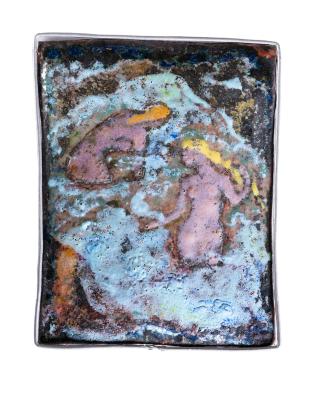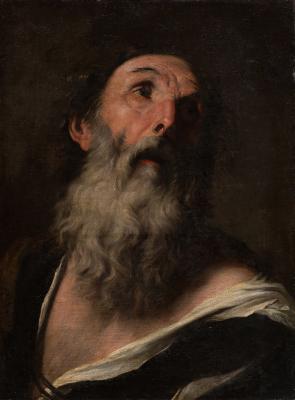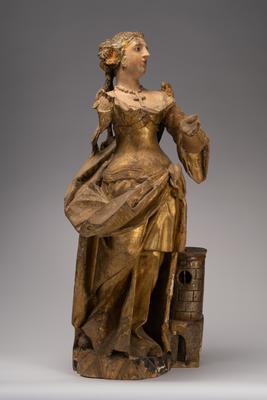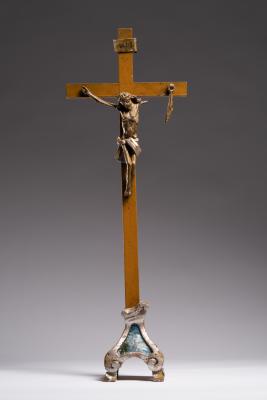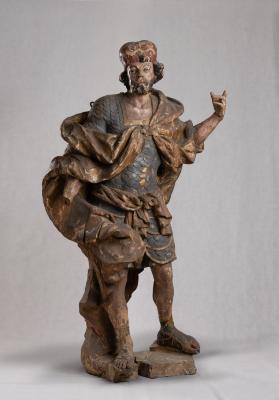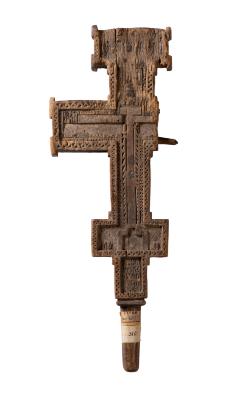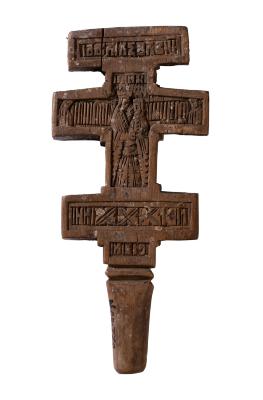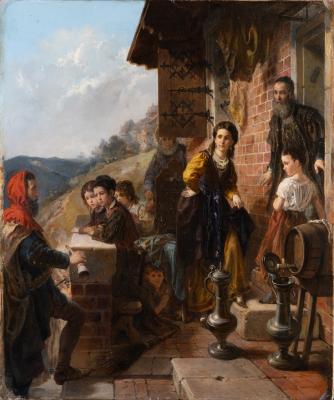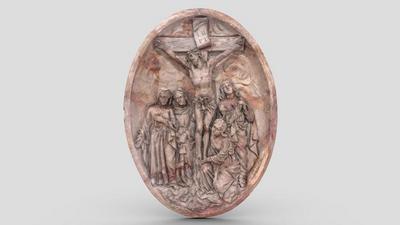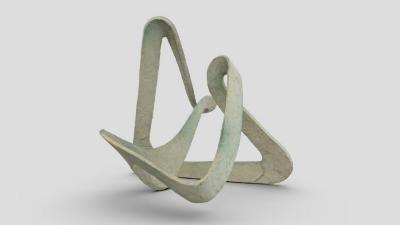Janusz Antoni Wisniowiecki (1678–1741/42) was a son of Konstanty Krzysztof Wisniowiecki, a voivode of Belsk, and Anna Chodorowska; Court Marshal of Lithuania, a voivode of Vilnius and Krakow, and a castellan of Krakow (since 1727). His wife was Teofila Leszczynska. The godfather of his only daughter Franciszka was the Ukrainian hetman Ivan Mazepa. Janusz Antoni Wisniowiecki founded the Collegium in Kremenets. The image imitates the traditions characteristic of the representative works of the 18th century, which are characterized by ceremonial monumentality. The painting has attributes typical of the portrayal of noblemen, i.e., a magnificent cartouche with the family coat of arms, a drapery, and a massive column in the background. The man is dressed in an expensive fur-lined red cape over a knight's armour and a blue ribbon with the Order of the White Eagle. The features of his face are depicted in a planar way: a high forehead with raised eyebrow arches, tightly closed lips, and a well-defined chin. In the upper corner of the portrait, there is a coat of arms with the inscription "Korybut Wisniowiecki" around it and the letters "I-A, ?-X, W-K, K". The work comes from Bilyi Kamin village in Brody district.









